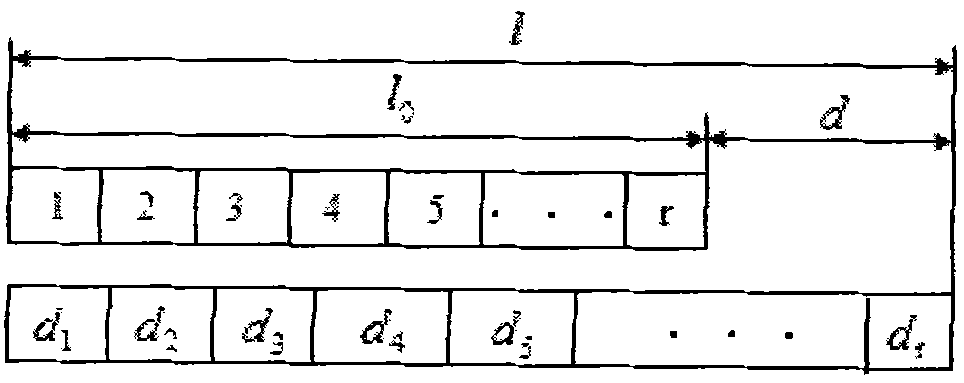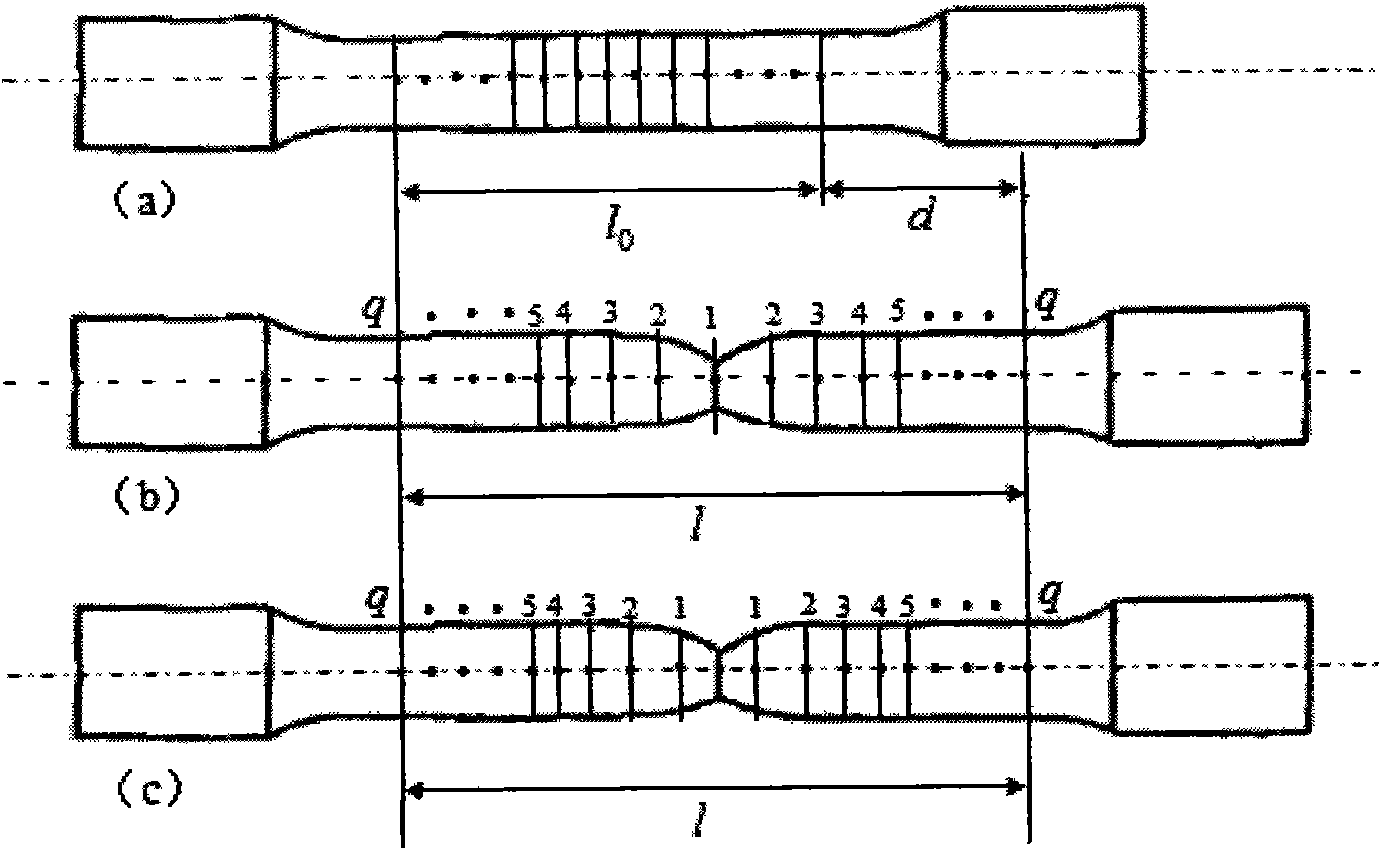Data measuring and calculating method for uniaxial tensile test
A uniaxial tensile and data measurement technology, which is applied in the field of measurement and calculation of test data, and can solve problems such as grid size effect, grid size definition, failure strain setting, etc.
- Summary
- Abstract
- Description
- Claims
- Application Information
AI Technical Summary
Problems solved by technology
Method used
Image
Examples
Embodiment 1
[0161] This example gives a detailed proof of the reference length effect in the uniaxial tensile test from the basic theory, and obtains the calculation method of the engineering fracture strain.
[0162] In the background technology, literature [2] gives the calculation formula of engineering fracture strain. In fact, it is assumed that the overall deformation of the sample is produced by a single local area. When the reference length is small to a certain extent, this assumption is obviously not consistent with the actual situation. At the same time, the conclusion of literature [2] is only limited to the reference length effect in the case of material fracture, and does not consider the reference length effect in the case of elastic deformation and plastic deformation. In order to make up for the deficiencies in literature [2] , the following considers the influence of the deformation of each local area on the engineering fracture strain. Similarly, the calibrated length of...
Embodiment 2
[0189] This embodiment describes the specific technical steps of the present invention in detail, and gives theoretical explanations and solutions to practical problems such as grid size effects and energy absorption.
[0190] Example 1 systematically proves the reference length effect, and qualitatively gives the expression of the engineering fracture strain and the change trend of the reference length effect curve. Quantitative calculation and analysis are carried out in the experiment.
[0191] This example proposes a specific test data measurement and calculation method to establish the correspondence between the grid size and the reference length, and to find a solution to the grid size effect in the finite element method. On the basis of the uniaxial tensile test, the labeling and marking procedure of the standard sample is added, the data measurement and calculation method of the existing technology is changed, and the real stress-strain curve group is drawn. The steps ...
Embodiment 3
[0289] Since a notable feature of Example 2 is that the real stress-strain curves under different reference lengths are obtained from the same test, but the measurement of the distance between the marked points needs to be realized with the help of relevant digital information technology and data processing software, a comparative test is proposed for the test equipment and technology. High requirements, therefore, the test cost is relatively high. In theory, based on existing test conditions and test techniques. The real stress-strain curves under different reference lengths can be obtained by changing the calibrated length of the test piece and performing uniaxial tensile tests respectively, that is, a method proposed in this example with similar technical effects to Example 2 but with lower technical requirements , whose steps include:
[0290] The first step is to make tensile samples: make different tensile samples whose calibrated length is less than the calibrated leng...
PUM
 Login to View More
Login to View More Abstract
Description
Claims
Application Information
 Login to View More
Login to View More - R&D
- Intellectual Property
- Life Sciences
- Materials
- Tech Scout
- Unparalleled Data Quality
- Higher Quality Content
- 60% Fewer Hallucinations
Browse by: Latest US Patents, China's latest patents, Technical Efficacy Thesaurus, Application Domain, Technology Topic, Popular Technical Reports.
© 2025 PatSnap. All rights reserved.Legal|Privacy policy|Modern Slavery Act Transparency Statement|Sitemap|About US| Contact US: help@patsnap.com



